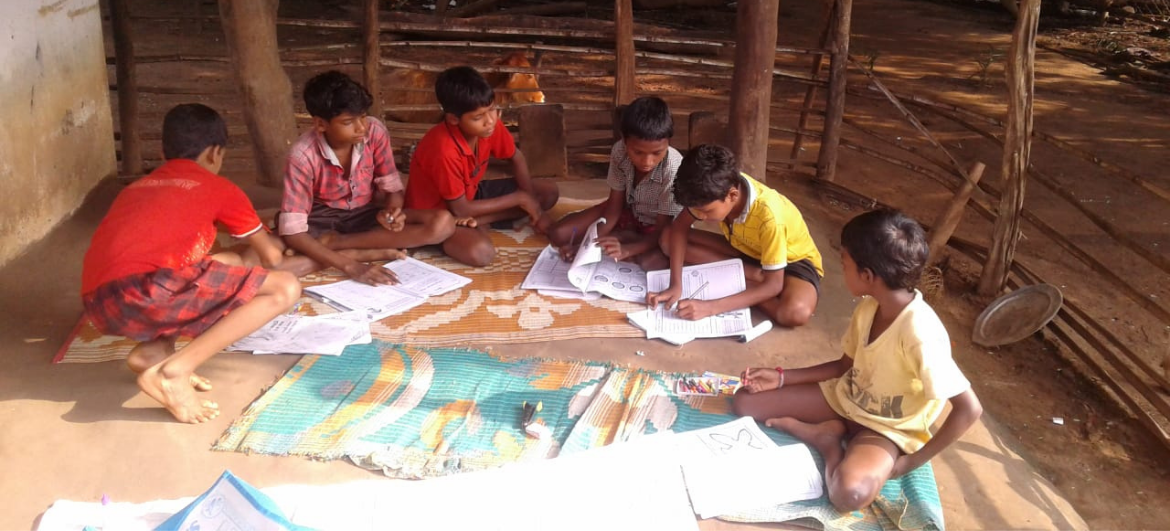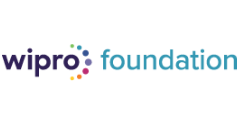Quis autem velum iure reprehe nderit. Lorem ipsum dolor sit nulla or narjusto laoreet onse ctetur adipisci.

Shiksharth Trust
Supported by: Wipro
About Shiksharth
Organization’s Vision, Mission and Strategy
Shiksharth is a not-for-profit educational initiative designing and implementing contextualized positive childhood experiences for children from spaces of conflict and adversity by strengthening pedagogy, systems, and community in an integrated approach.
Location
Currently, the initiative is based out of Sukma, Chhattisgarh in Central India which is a region suffering from 4 decades of armed conflict because of left-wing extremism.
As part of the initiative 480 schools and 20000+ children in the Bastar region are supported with volunteers, learning materials, and school improvement support.
The vision statement of Shiksharth – is ‘Positive childhood experiences for every child irrespective of any adversity and conflict.’
Shiksharth has been working in Sukma since 2015 with the proximity of problems in an immersive mode. Among various pressing issues, we decided to get engaged with fundamental educative challenges in tribal areas i.e., the difference between – the medium of instruction (Hindi) in school and children’s mother tongue and authorized state curriculum, content, and context of children while we also address the issue of safe spaces for children who are traumatized by the ongoing violence in their daily lives.
Shiksharth at the core believes in a community-led model of education and is currently working on ways by which the community, its wisdom, culture, and customs can be contextually incorporated into classroom content and pedagogy.
The mission statement of Shiksharth – By 2028, Shiksharth will enable access to positive childhood experiences for 1 million children coming from spaces of conflict and adverse geographies.
The strategy/model of Shiksharth:.
Program updates
Personalized Learning Solutions (Subject Lab) is considered a platter of in-house designed, and existing, learning solutions for rural and tribal schools. The program intends to provide contextually relevant learning solutions for children that can enable them to be independent learners by integrating socio-cultural elements into the curriculum and developing pedagogical approaches that provide for differentiation.
The subject lab is a breakthrough pedagogical solution that replaces the idea of classrooms in schools and introduces subject rooms that are in alignment with 21st-century skills and bring in contextually relevant teaching-learning opportunities to enable self-paced and self-designed learning that caters to different learning styles for a child in an elementary classroom with multi-grade, multi-level and multi-lingual diversity. Enhancing learning outcomes and creating community involvement tools in improving the education standards and quality in the region.
As part of our effort towards providing contextually relevant learning solutions, we have developed multiple solutions and seen their impact on learning outcomes and improvement in the attendance of children. Most of these solutions have been tried as independent solutions in isolation and have led to better outcomes for children and now we are at a stage where we intend to converge and bring a consortium in place converging all these as one common solution offering a platter of opportunities for children to learn in a style that suits their pace and style.
We are calling it ‘Personalized Learning Solutions’ and implementing it as ‘SUBJECT LABS’ in primary schools.
How the program is being implemented:
- Developing personalized learning opportunities for students and addressing the issue of ‘multi-grade and multi-level’ classrooms
- Developing physical and socio-emotional safe spaces for children to learn
- Improving the learning outcomes of children in terms of ‘foundational literacy and numeracy’ (FLN) and grade-level competencies in the classrooms
- Developing technology-integrated blended learning model classrooms in the schools
- Developing skills and mindsets along with providing access and exposure to better learning opportunities for children
- Developing parent and community engagement and awareness towards the learning of children
- Developing school environment and structures along with teacher capacity building
- Enabling technology-integrated learning modules through ‘feature phones’ for students and teachers
- Developing multilingual stories and resources for children in their local language.
Impact through the program:
- The children have started learning through their age-specific and learning level-specific differentiated learning content aligned with the state curriculum and content.
- The pedagogy has been tweaked to meet the sociocultural and contextual needs of the children.
- Improved learning outcomes in children in Foundational Literacy and Numeracy as per the initial insights from assessments.
- Children have started learning in a conducive environment for their learning reflecting in their improved engagement and attendance in classrooms.
- Children have started taking ownership of creating print-rich classrooms.
- Increased attendance of children in class
- The parents’ attendance at the school gatherings has increased compared to previous years. We are looking ahead to measure the quantitative betterment in the learning levels of children through the parent’s increased involvement.
- The community is becoming aware of the learning progress among children.
Challenges and Learning:
- Reaching out to parents and the community. The parent and community involvement in the learning sphere of children have still been in progress for us as the community youth are undergoing rigorous teacher professional development programs and capacity building on the path to working out their approaches in the classroom space till now. The advent of venturing into the community has to be planned for the coming years.
- The up-skilling and effective implementation by the community youth is taking a considerable amount of time and has to be strengthened with more efficient and effective processes.
- The year has been very fruitful in terms of learning program design and documentation along with some partner organizations. The onus now lies with the effective implementation from the coming years.
- The pilot of the ‘subject lab’ had to be fragmented in the last year because of a lack of human resources in the organization. The next year looks hopeful with a considerable number of human resources and seems to be promising.
Plans for the next 1-3 years
| Domain | Activity | Target Group |
| Personalized learning solutions |
|
Children, partner organizations, parents, community, and Teachers |
| Menstrual Hygiene and Management (MHM) |
|
Children and community |
| STEM Program |
|
Children, teachers, and administration |
| Ecology Curriculum and Nature School |
|
Children, teachers, and community |
| Parent Engagement Tool |
|
|
| Communications and outreach |
|
Partners, donors, children, ecosystem |
| Partnerships |
|
partner organizations, administration |
| Capacity building in the organization |
|
Team members, teachers, and partner organizations |
| Shiksharth’s function as a knowledge csenter focusing on tribal and rural areas. |
|

